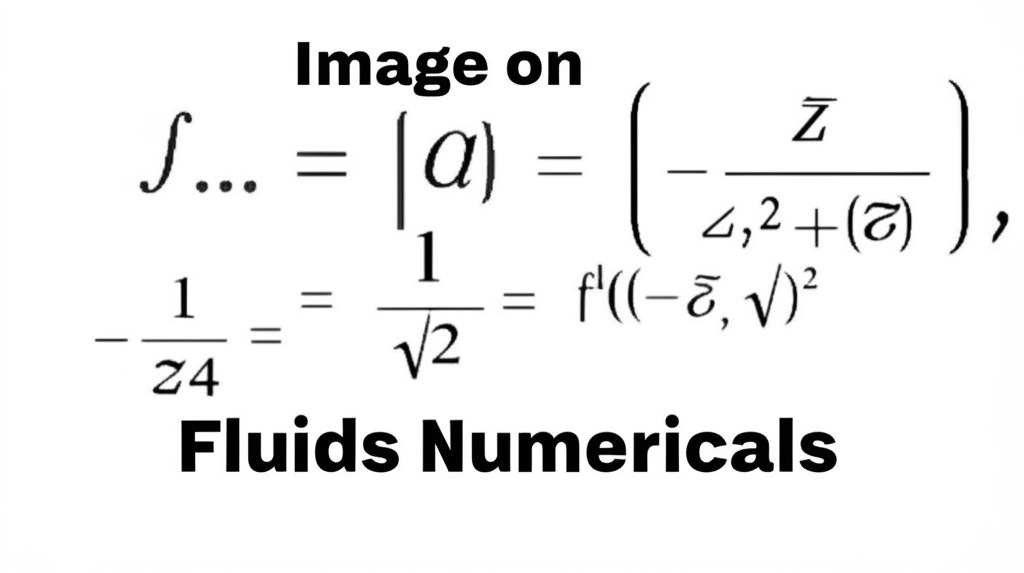Solutions to Grade IX ICSE Fluids Numerical Test
(4th Feb 2025)
Graded Worksheet 1 (Total Marks: 50)
1. Pressure exerted by high heels
A woman weighing 600 N stands on heels with a contact area of 1 cm2.
Converting area:
\(1~\text{cm}^2 = 1 \times 10^{-4}~\text{m}^2\).
Pressure,
\(P = \dfrac{600}{1 \times 10^{-4}} = 6 \times 10^6~\text{Pa}\).
2. Iron cube: Thrust and Pressure
-
Cube side = 10 cm = 0.1 m → Volume = \(0.1^3 = 0.001~\text{m}^3\).
Mass = density \(\times\) volume = \(8000 \times 0.001 = 8~\text{kg}\).
Weight (thrust) = \(8 \times 10 = 80~\text{N}\). -
Contact area (bottom face) = \(10 \times 10 = 100~\text{cm}^2 = 0.01~\text{m}^2\).
Pressure = \(\dfrac{80}{0.01} = 8000~\text{Pa}\).
3. Pressure due to a liquid column
Given: \(\rho = 1.3 \times 10^3~\text{kg/m}^3\), \(h = 1.2~\text{m}\), \(g = 10~\text{m/s}^2\).
\(P = \rho g h = 1.3 \times 10^3 \times 10 \times 1.2 = 1.56 \times 10^4~\text{Pa}\).
4. Pressure on a scuba diver
-
Liquid pressure at 6 m depth:
\(P_{\text{liquid}} = 1000 \times 10 \times 6 = 60000~\text{Pa}\). - Total pressure = Atmospheric pressure \(+ P_{\text{liquid}}\) = \(1.01 \times 10^5 + 60000 = 1.61 \times 10^5~\text{Pa}\).
5. Glycerine in a flask: Pressure and Thrust
-
Height = 20 cm = 0.20 m, \(\rho = 1.3 \times 10^3~\text{kg/m}^3\), \(g = 10\).
Pressure at bottom: \(P = 1.3 \times 10^3 \times 10 \times 0.20 = 2600~\text{Pa}\). -
Flask bottom is circular with radius 8.0 cm = 0.08 m.
Area \(A = \pi (0.08)^2 \approx 0.0201~\text{m}^2\).
Thrust \(= P \times A \approx 2600 \times 0.0201 \approx 52.3~\text{N}\).
6. Thrust on a plate at the bottom of an open tank
Water depth = 1.25 m, \( \rho = 1000~\text{kg/m}^3\), \(g = 10\).
Pressure \(P = 1000 \times 10 \times 1.25 = 12500~\text{Pa}\).
Plate area = 40 cm2 = 0.004 m2.
Thrust \(= 12500 \times 0.004 = 50~\text{N}\).
7. U-tube: Determining density and relative density of oil
The mercury levels balance the pressures from the two liquid columns. Equate pressures:
\(\rho_{\text{water}} \, (10.0~\text{cm}) = \rho_{\text{oil}} \, (12.5~\text{cm})\).
With \(\rho_{\text{water}} = 1.0~\text{g/cm}^3\),
\(\rho_{\text{oil}} = \frac{10.0}{12.5} = 0.8~\text{g/cm}^3\).
Relative density of oil = 0.8.
8. Equivalent height of a water column for atmospheric pressure
A mercury column of 75 cm (0.75 m) represents atmospheric pressure. Using
\(P = \rho_{\text{Hg}}\, g\, h_{\text{Hg}}\) with \(\rho_{\text{Hg}} = 13.6 \times 10^3~\text{kg/m}^3\),
the equivalent water column height \(h_{\text{water}}\) satisfies:
\(\rho_{\text{water}}\, g\, h_{\text{water}} = 13.6 \times 10^3 \times 10 \times 0.75\).
Thus, \(h_{\text{water}} = \frac{13.6 \times 10^3 \times 0.75}{1000} = 10.2~\text{m}\).
9. Height of the second floor from pressure difference
Pressure difference: \(1.5 \times 10^5 – 0.9 \times 10^5 = 60000~\text{Pa}\).
Using \( \Delta P = \rho\, g\, h\) with \(\rho = 1000~\text{kg/m}^3\) and \(g = 10\),
\(h = \frac{60000}{1000 \times 10} = 6~\text{m}\).
10. Barometer reading for 0.98 bar atmospheric pressure
0.98 bar = 98000 Pa. Using \(h = \frac{P}{\rho\, g}\) with \(\rho_{\text{Hg}} = 13.6 \times 10^3~\text{kg/m}^3\) and \(g = 10\),
\(h = \frac{98000}{13600 \times 10} \approx 0.7206~\text{m} \approx 72.1~\text{cm}\).
Graded Worksheet 2 (Total Marks: 50)
11. Metallic piece: Density and Upthrust
- Density \(=\dfrac{50~\text{g}}{20~\text{cm}^3} = 2.5~\text{g/cm}^3\).
-
Upthrust = weight of displaced water = \(20~\text{cm}^3 \times 1~\text{g/cm}^3\).
In SI: \(20~\text{g-force} \approx 0.2~\text{N}\).
12. Height of a hill from barometer reading
At sea level, barometer reading = 76 cm Hg; on the hill = 70 cm Hg.
Difference = \(76 – 70 = 6~\text{cm} = 60~\text{mm}\).
Since pressure falls by 10 mm per 120 m, height \(=\dfrac{60}{10} \times 120 = 720~\text{m}\).
13. Object in water: Loss in weight, Upthrust, and Relative Density
- Loss in weight \(= 3.2 – 2.7 = 0.5~\text{N}\).
- Upthrust \(= 0.5~\text{N}\) (by Archimedes’ principle).
-
Let true weight \(= W\) and upthrust \(= B\). Then,
\(\dfrac{B}{W} = \dfrac{\rho_{\text{water}}}{\rho_{\text{object}}}\).
Hence, relative density of object \(= \dfrac{W}{W – (\text{apparent weight})} = \dfrac{3.2}{0.5} = 6.4\).
14. Body immersed in a liquid
- Upthrust \(= 50~\text{cm}^3 \times 0.9~\text{g/cm}^3 = 45~\text{g-force}\).
- Apparent weight in liquid \(= 85.0 – 45 = 40.0~\text{gf}\).
15. Determining properties of a body immersed in water
- Loss in weight \(= 350 – 210 = 140~\text{gf}\).
- Upthrust \(= 140~\text{gf}\).
- Relative density \(=\dfrac{350}{140} = 2.5\).
- Density of body \(= 2.5~\text{g/cm}^3\) (since water = \(1~\text{g/cm}^3\)).
- Volume of body \(= \) weight loss (in gf) \(= 140~\text{cm}^3\).
16. Brass piece: Upthrust, Volume, and Density
- Loss in weight \(= 180 – 160 = 20~\text{gf}\).
- Volume \(= 20~\text{cm}^3\) (since water density is \(1~\text{g/cm}^3\)).
- Density of brass \(=\dfrac{180}{20} = 9~\text{g/cm}^3\).
17. Floating iceberg: Percentage submerged
Fraction submerged \(= \dfrac{917}{1026} \approx 0.894\).
Hence, approximately 89.4% of the iceberg is submerged.
18. Density of a floating wooden article
If 60% of the volume is above water, then 40% is submerged.
Using \(\dfrac{\rho_{\text{wood}}}{\rho_{\text{water}}} = \) fraction submerged,
\(\rho_{\text{wood}} = 0.4 \times 1000 = 400~\text{kg/m}^3\).
19. Wooden block: Density and Submerged Volume
- Density \(=\dfrac{24.0}{0.04} = 600~\text{kg/m}^3\).
-
Fraction submerged \(=\dfrac{600}{1000} = 0.6\);
Submerged volume \(= 0.6 \times 0.04 = 0.024~\text{m}^3\).
20. Hollow iron ball floating on water
- Effective density \(=\dfrac{90~\text{g}}{200~\text{cm}^3} = 0.45~\text{g/cm}^3\).
-
Fraction submerged \(= 0.45\) (or 45% submerged), hence
Fraction above water \(= 1 – 0.45 = 0.55\) (55% above water). - Since the buoyant force equals the weight for a floating object, the apparent weight is 0.
Graded Worksheet 3 (Total Marks: 50)
21. Wood floating in water and another liquid
-
In water: Submerged height = 13.5 cm, Total height = 18 cm,
Fraction submerged = \( \frac{13.5}{18} = 0.75\).
Thus, density of wood \(= 0.75~\text{g/cm}^3\) (since water = \(1~\text{g/cm}^3\)). -
In the given liquid: Submerged height = 12 cm,
Fraction submerged = \( \frac{12}{18} = 0.667\).
Since \(\dfrac{\rho_{\text{wood}}}{\rho_{\text{liquid}}} = 0.667\),
\(\rho_{\text{liquid}} = \dfrac{0.75}{0.667} \approx 1.125~\text{g/cm}^3\).
22. Ice slab floating in a saltish solution
Density of ice = 900 kg/m3 and solution = 1008 kg/m3.
Fraction submerged \(=\dfrac{900}{1008} \approx 0.893\).
For an ice volume of 1200 cm3:
Submerged volume \(\approx 0.893 \times 1200 \approx 1071.4~\text{cm}^3\),
Volume above surface \(\approx 1200 – 1071.4 \approx 128.6~\text{cm}^3\).
23. Hollow cylinder with added lead shots
-
Total weight \(= 85 + 35 = 120~\text{gf}\).
For a floating body, upthrust equals its weight, so upthrust \(= 120~\text{gf}\). -
Let the cross-sectional area of the cylinder be \(A\) (in cm2) and depth of immersion = 10 cm.
Buoyant force \(= \rho_{\text{liquid}} \times A \times 10\), with \(\rho = 1.2~\text{g/cm}^3\).
Hence, \(1.2 \times 10 \times A = 120 \Rightarrow A = \frac{120}{12} = 10~\text{cm}^2\).
24. Maximum load lifted by a hydrogen-filled balloon
Volume of balloon \(= 240~\text{m}^3\).
Densities: \(\rho_{\text{air}} = 1.29~\text{kg/m}^3\), \(\rho_{\text{H}_2} = 0.09~\text{kg/m}^3\).
Using \( \text{Lift} = (\rho_{\text{air}} – \rho_{\text{H}_2})\, V\, g\) with \(g=10~\text{m/s}^2\):
\( \text{Lift} = (1.29 – 0.09) \times 240 \times 10 = 1.20 \times 2400 = 2880~\text{N}\).
This is equivalent to a load of approximately \( \dfrac{2880}{10} = 288~\text{kg}\).
25. Derivation of apparent weight formula
Let an object of weight \(W\) and density \(\rho\) be immersed in a liquid of density \(\rho_l\).
Volume of object \(V = \dfrac{W}{g\,\rho}\).
Upthrust \(= \rho_l\, g\, V = \rho_l\, g\, \dfrac{W}{g\,\rho} = \dfrac{W\, \rho_l}{\rho}\).
Apparent weight \(= W – \dfrac{W\, \rho_l}{\rho} = W \left(1 – \dfrac{\rho_l}{\rho}\right)\).
26. Density of platinum
- In the CGS system: Density \(= 21.5~\text{g/cm}^3\).
- In the SI system: Density \(= 21.5 \times 1000 = 21500~\text{kg/m}^3\).
27. Determining relative densities from buoyancy measurements
-
In water: Loss in weight \(= 44.5 – 39.5 = 5~\text{gf}\).
Volume of metal \(= 5~\text{cm}^3\) → Density \(= \dfrac{44.5}{5} = 8.9~\text{g/cm}^3\). -
In the given liquid: Loss in weight \(= 44.5 – 37.5 = 7~\text{gf}\).
Volume (same as above) \(= 5~\text{cm}^3\) → Density of liquid \(= \dfrac{7}{5} = 1.4~\text{g/cm}^3\).
Relative densities: Metal = 8.9, Liquid = 1.4.
28. Solid immersed in a liquid
- Loss in weight \(= 30 – 26 = 4~\text{gf}\).
- Volume of solid \(= \dfrac{4}{0.8} = 5~\text{cm}^3\).
- Density of solid \(= \dfrac{30}{5} = 6~\text{g/cm}^3\).
- Relative density \(= 6\).
29. Checking the jeweler’s claim on gold ornaments
Weight in air = 44.58 gf, weight in water = 41.96 gf.
Loss in weight \(= 44.58 – 41.96 = 2.62~\text{gf}\).
Volume \(= 2.62~\text{cm}^3\) → Density \(= \dfrac{44.58}{2.62} \approx 17.02~\text{g/cm}^3\).
Thus, relative density \(\approx 17.0\).
Since the jeweler claimed 18.43, the claim is not correct.
30. Determining properties of a cork piece using a lead sinker
-
Volume of the sinker:
Given weight of sinker = 43.0 gf and relative density of lead = 11.0,
Volume \(= \dfrac{43.0}{11.0} \approx 3.91~\text{cm}^3\). -
Loss in weight of the sinker:
Buoyant force on sinker = volume displaced = \(3.91~\text{gf}\). -
Total system:
Combined weight in air = \(6.5 + 43.0 = 49.5~\text{gf}\).
Measured weight in water = 11.5 gf, so total buoyant force \(= 49.5 – 11.5 = 38.0~\text{gf}\). -
Loss in weight of the cork:
Buoyant force on cork = Total buoyant force \(-\) buoyant force on sinker = \(38.0 – 3.91 \approx 34.09~\text{gf}\). -
Weight (apparent) of the cork in water:
Apparent weight \(= 6.5 – 34.09 \approx -27.59~\text{gf}\).
A negative value indicates that the cork experiences a net upward force (it would float if not restrained). -
Relative density of the cork:
Volume of cork \(= 34.09~\text{cm}^3\) (since buoyant force equals the weight of displaced water),
Relative density \(=\dfrac{6.5}{34.09} \approx 0.19\).



